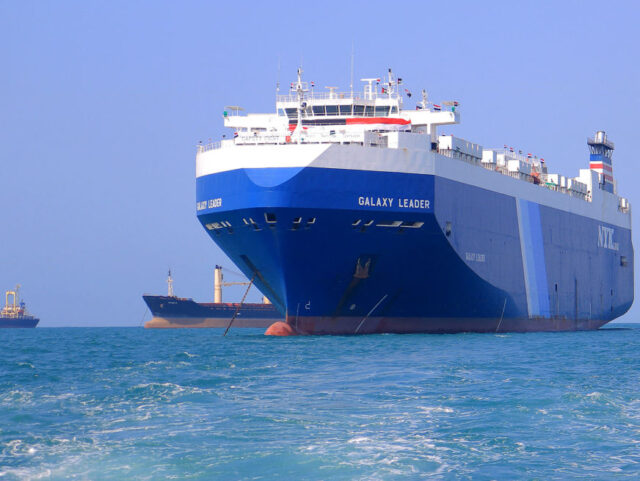The United States has announced a coalition of warships to keep the Red Sea and Bab-El Mandeb open, but until the waterway is proven safe maritime trade will avoid the area or risk it at a premium, forcing up the cost of imports on which the West relies.
Ultra-large container ships carrying tens of thousands of 20-foot equivalent containers each have paused their voyages through the Red Sea or are diverting to avoid the area altogether, sailing around Africa instead, adding millions of dollars in costs to imports. The impact on the economy isn’t limited to container traffic either, with car carriers and oil tankers also diverting away from the Red Sea.
Dozens of attacks have been launched from Iran-backed Houthi Shiite Islamist militias in Yemen in recent weeks, claimed by their account to be an act of solidarity with Gaza over the Hamas-Israel war, but increasingly indiscriminate attacks on shipping passing through the strategic Red Sea. While Western navies already patrolling the area have shot down Houthi weapons, several projectiles have already struck cargo ships, including a German-operated container ship and a Norwegian-flagged tanker.
Part of a short-cut route from the factories of the East and the oil wells of the Gulf to Europe and the American East Coast, the route passes through the Bab-el Mandeb strait, the Red Sea, and the Suez Canal between the Indian Ocean and the Mediterranean.
Hapag-Lloyd Container Ship Set Ablaze in Red Sea After Yemen Missile Strike https://t.co/wbtk8VWq5b
— Breitbart London (@BreitbartLondon) December 15, 2023
If this route becomes dangerous trade can still flow, but costs rise. Those that continue to risk the Red Sea in such circumstances can expect to pay considerably higher insurance premiums and may even pay to embark security teams, all factors which impact the end-price of imported goods, which has an inflationary effect on Western economies. Otherwise ships can divert around the Cape of Good Hope off South Africa, with concomitant increases in fuel and crew costs, along with delivery date delays as the route can take days or weeks longer.
The extra time container cargo would spend at sea to go around Africa rather than take the Red Sea route is so great, the venerable London maritime publication Lloyd’s List reports, it would “soak up 5%-6% of global capacity”. The publication notes “Containership freight rates on the Asia to the Mediterranean route have already risen by 20%”, and the “real” effect lags by about four weeks, suggesting meaningful further price surges for shipping are coming.
Container ships, tankers, and car transporters represent enormous concentrations of wealth: not only the considerable outlay in ship building, but a large ship can easily carry a billion dollars of containerised merchandise aboard. The loss of any one such ship would be a major shock event for shipping and insurance markets, never mind a series of losses to state-sponsored terrorism. Ship owners are already acting to avoid being a victim of a missile that gets through the coalition’s warship screen, and Lloyd’s further reports that “at least nine… ultra large containerships bound from Europe to Asia remain idle in the Red Sea… A further eight large containerships are currently idling in the Arabian Sea having had their transit of the Red Sea cancelled”.
Missile Strikes Norwegian-Flagged Tanker in Red Sea off Yemen in Apparent Expansion of Terror Attackshttps://t.co/fY9ioEOq7y
— Breitbart London (@BreitbartLondon) December 12, 2023
Yet other ships, including those operated by container giant Maersk Line, and car transporters operated by Wallenius Wilhelmsen, and some tanker operators have turned around and are proceeding via the Cape instead.
As reported, the United States and allies has responded to the missile and drone strikes in the Red Sea and established Operation Prosperity Guardian, a multinational maritime force to secure the sea against Houthi attacks. Yet the mission is another layer to already-active maritime security deployments already in the area, and some difficult questions remain, including whether the ships available will attempt to cover the whole area at once, or attempt tactics considered during the height of the Somali pirate threat with organised convoys.
Both options have their disadvantages, and all of this work is expensive. A single air warfare destroyer costs north of £120,000 a day to keep at sea, and a single launch of an anti-air missile can cost well over a million pounds.
Not good. Not good at all. https://t.co/Ix9sWa1lOu
— Breitbart News (@BreitbartNews) December 16, 2023

COMMENTS
Please let us know if you're having issues with commenting.